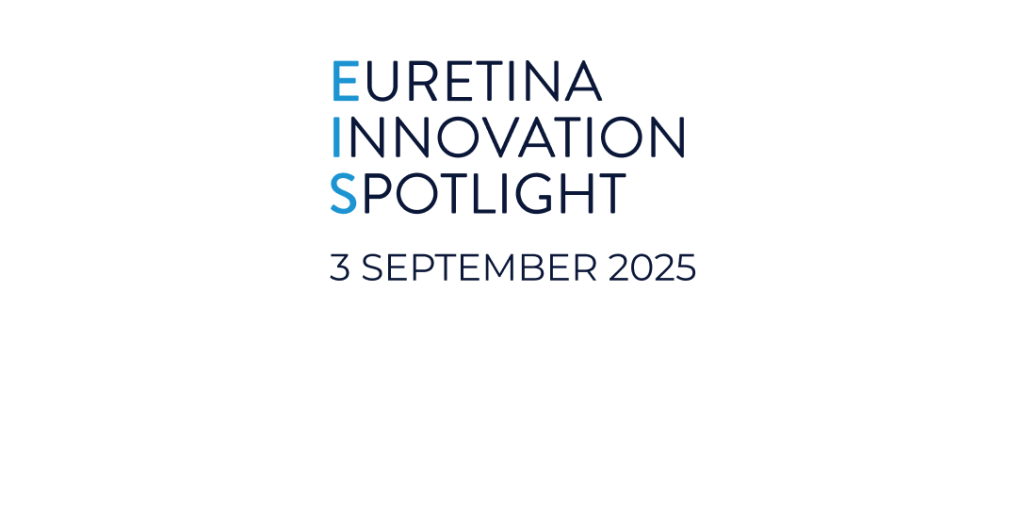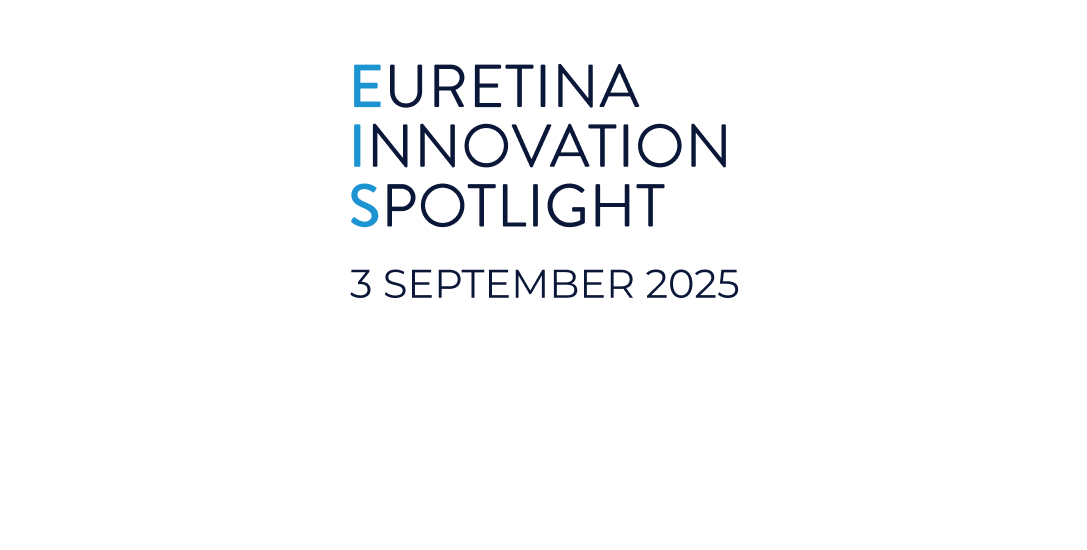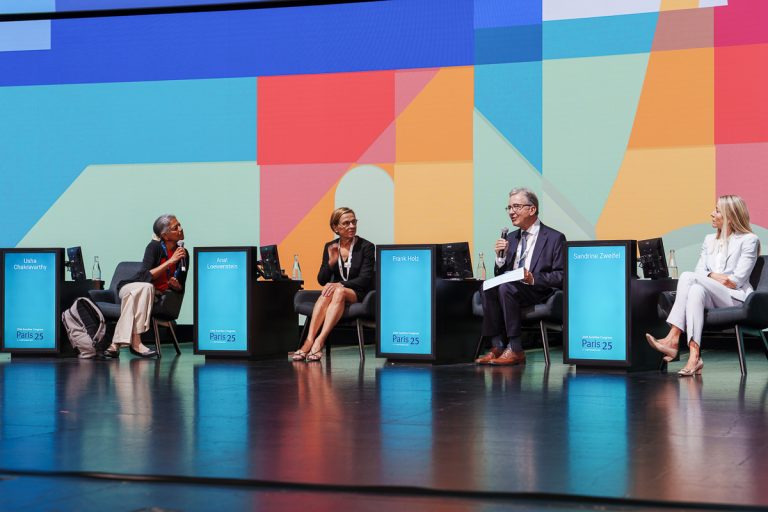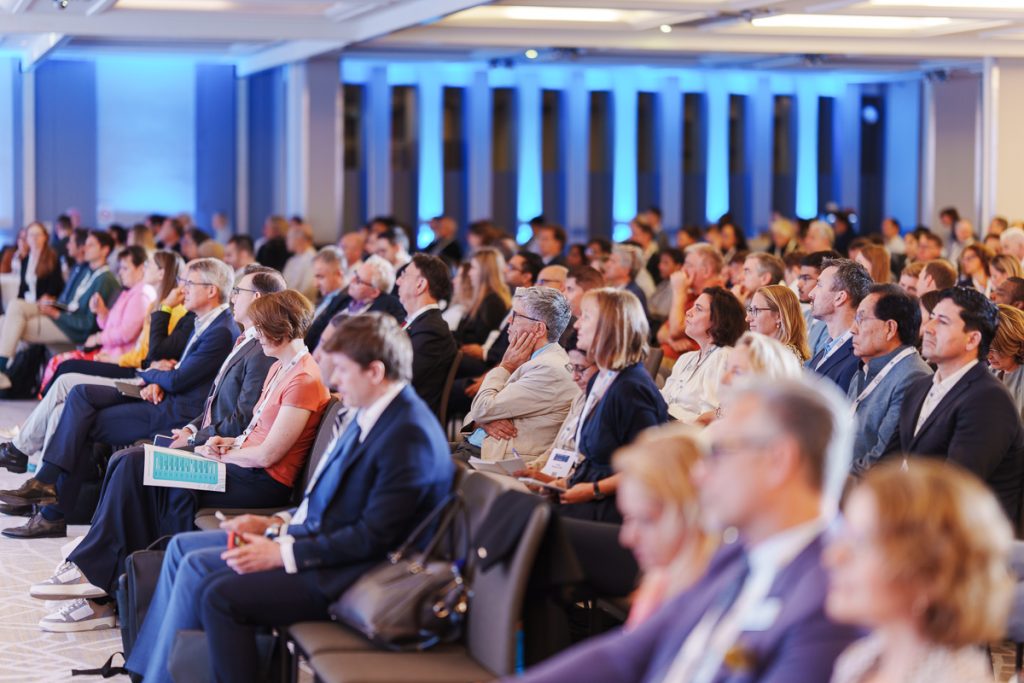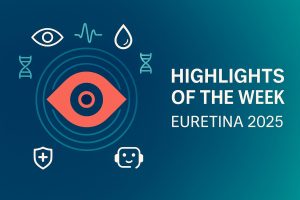Following directly after EURETINA session 1, the second EURETINA session of EURETINA 2025 continued with a focus on age-related macular degeneration (AMD) but shifted to the topic of neovascular disease.
In the first talk of the session, Dr. Usha Chakravarthy (Northern Ireland) provided new insights on macular atrophy and fibrosis in treated neovascular AMD (nAMD). Summarising key points of her presentation, Dr. Chakravarthy said that OCT-defined persistent hyper-reflective material, whether sub-retinal or sub-RPE, is a proxy for fibrosis and that macular atrophy in eyes with AMD has different anatomical characteristics compared to geographic atrophy.
She noted that research has shown that complete resolution or development boundary internal to the HRM is associated with better function and lower macular atrophy risk. In addition, subretinal or sub-RPE fibrosis and macular atrophy have complex longitudinal associations.
Referring to the latter, she said, “We have not dissected this out entirely, but we know both features are associated with worse visual acuity.”
Dr. Rosa Dolz-Marco (Spain) discussed non-exudative OCT findings in eyes with nAMD as a guide to management decisions. The premise for her presentation is the fact that exudative changes are responsible for acute changes in visual acuity in eyes with AMD and are an indication for intervening as soon as possible. However, a myriad of neurodegenerative and atrophic changes can also be seen on OCT. While these latter changes impact vision, they have no currently available therapies.
In particular, Dr. Dolz-Marco highlighted the importance of hyporeflective features because of the potential for misdiagnosis as fluid.
“It is important to recognise these features and know their characteristics so that we can differentiate them from real fluid and avoid overtreatment,” she said.
The next two talks in the session focused on new generation therapies. Dr. Sandrine Zweifel (Switzerland) discussed the two newer anti-VEGF drugs that offer longer durability – aflibercept 8 mg and faricimab. She reviewed results from the phase 3 studies of those products and from real-world studies, including from the Swiss Retina Research Network, that showed these agents allow prolongation of the treatment intervals, which leads to reduced treatment burden, and have strong safety profiles.
Discussing safety, Dr. Zweifel observed that injection of a higher molar concentration of drug with these next-generation anti-VEGF agents may explain their association with a higher rate of intraocular inflammation versus previously available anti-VEGF drugs, but she suggested that the availability of the newer agents in prefilled syringes will lead to increased safety.
Dr. Zweifel also spoke about next-generation methods for data analysis, specifically automated artificial intelligence analysis of OCT fluid data using retinai software and Notal vision.
“I believe this is a very exciting development as it provides more granular and objective insights across the full spectrum of the disease,” she said.
Dr. Arshad Khanani (United States) reviewed gene therapy for nAMD. After discussing the rationale for considering gene therapy for nAMD and outlining the strengths and limitations of the approach, he discussed data available for three agents that have progressed to phase 3 clinical trials – subretinal sura-vec, intravitreal ixoberogene soroparvovec, and intravitreal 4D-150.
“Last year when I gave this same talk at EURETINA, there was one gene therapy for nAMD in a phase 3 trial and now there are three. As we look forward to the next several years we will have a lot of exciting data. This is sustained delivery with a single treatment where we can stop the disease completely or significantly decrease treatment burden. I think we will continue to learn more about gene therapy as we move forward. It is not science fiction anymore. It is a reality.”
The session ended with a talk on telemedicine in AMD and retinal disease given by Dr. Pearse Keane (United Kingdom). As a disclaimer, Dr. Keane mentioned that artificial intelligence (AI) is the primary focus of his research, and he credited the work of his colleagues at Moorfields Eye Hospital for the information he would be presenting.
After setting the stage for his talk by describing the need for new clinical pathways to meet the increased demand for hospital eye services and providing definitions of telemedicine, Dr. Keane described four ways that telemedicine is being used at Moorfields – video consultations, virtual consultations, home monitoring, and “diagnostic hubs”, which are standalone sites within the local community versus the virtual clinics that are located in the hospital.
Reflecting on the topic from the perspective of an AI researcher, Dr. Keane proposed that telemedicine is about collecting data at any location, uploading it to a hospital cloud-based platform, and then using tools for automated data analysis that would direct the next step in patient care.
“Then, in the future we will see the introduction of virtual AI-powered assistants that can interact with patients supplemented by video consultations with clinicians,” he concluded.
All presentations from this session will be available for registered attendees on the On Demand platform.

